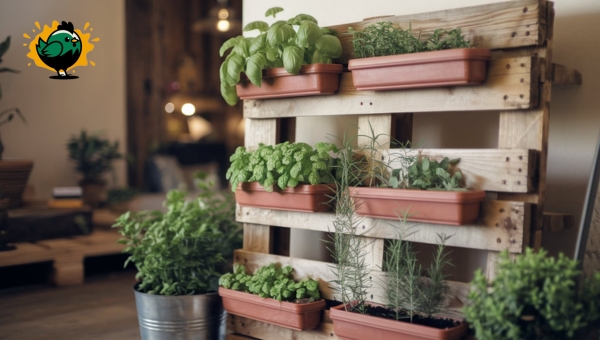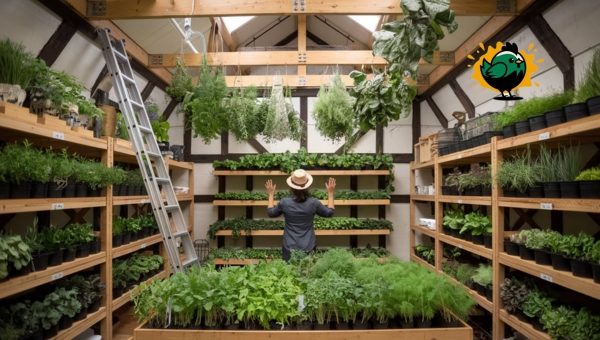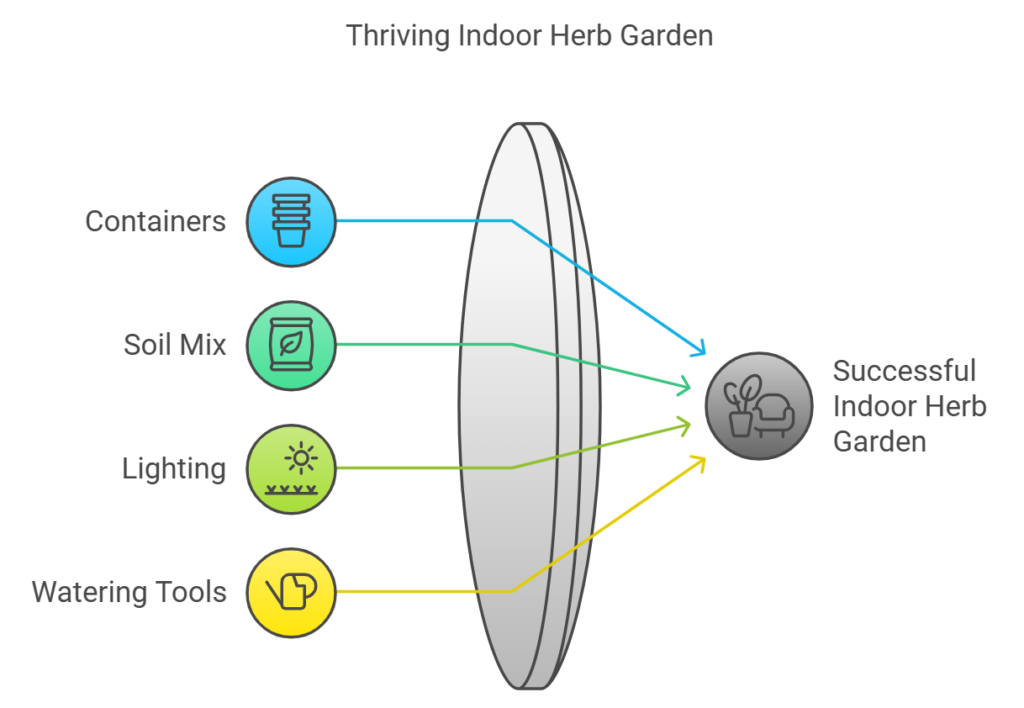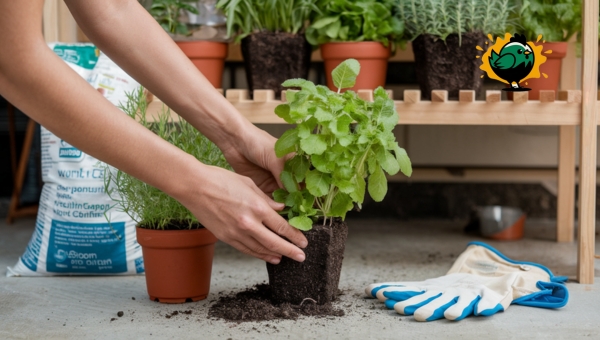How to Make an Indoor Herb Garden? Easy Tips Inside!

Stepping into your kitchen, greeted by the fragrance of fresh herbs, ready to elevate your dishes. With the know-how to make an indoor herb garden, this dream can become your everyday reality. Picture a space where basil, mint, and rosemary thrive, offering a breath of freshness to your home.
Creating an indoor herb garden isn’t just for seasoned gardeners; it’s a journey anyone can embark on. From choosing the right herbs to gathering essential supplies, each step is a discovery. Dive into this guide and transform your living space into a green sanctuary, where nature and culinary delights harmonize.
Benefits of an Indoor Herb Garden
Creating an indoor herb garden offers numerous advantages that enhance both your living space and lifestyle:

- Freshness at Your Fingertips: Having herbs indoors ensures you always have fresh ingredients available, elevating your culinary creations.
- Cost-Effective: Growing your own herbs can significantly reduce grocery bills, saving you money in the long run.
- Aesthetic Appeal: An herb garden adds a touch of greenery and beauty to your home, creating a more vibrant and inviting atmosphere.
- Improved Air Quality: Herbs like mint and basil can purify the air, contributing to a healthier indoor environment.
- Convenience: No need to dash out to the store; simply pluck what you need from your garden, making meal prep more convenient.
Embrace the joy of gardening indoors while reaping these rewarding benefits.
Choosing the Right Herbs
When planning an indoor herb garden, selecting the right herbs is crucial for success. Different herbs have varying needs, so understanding their requirements will help you nurture them effectively.
Consider factors like lighting, water, and space when choosing your herbs. Below, we’ll explore some popular choices that are excellent for indoor growth, each with its unique uses and benefits.
Popular Choices
- Basil: Known for its aromatic leaves, basil is perfect for adding flavor to Italian dishes.
- Mint: With its refreshing scent, mint is great for teas and desserts.
- Parsley: A versatile herb that’s often used as a garnish or in salads.
- Thyme: Its earthy flavor makes it ideal for seasoning meats and vegetables.
- Chives: With a mild onion flavor, chives are perfect for soups and dips.
Choosing the right herbs can transform your indoor space into a mini oasis of flavors and scents.
Also Read: Garden Table Centerpiece – Transform Your Outdoor Space
Essential Supplies for Your Herb Garden
When setting up an indoor herb garden, having the right supplies is key to success. From choosing the right containers to ensuring proper lighting and watering, each element plays a crucial role.

Let’s explore these essentials further to make sure your herbs thrive.
Containers
Selecting the right container is vital for your indoor herb garden. Consider these options:
- Clay Pots: Porous and allow air circulation, but may dry out quickly.
- Plastic Containers: Retain moisture well and are lightweight.
- Metal Cans: Offer a rustic look, but require drainage holes.
- Wooden Boxes: Provide a natural aesthetic but ensure they are treated to resist water damage.
Soil Mix
The soil mix you choose is essential for healthy herb growth. Key points include:
- Well-Draining: Prevents root rot by allowing excess water to escape.
- Nutrient-Rich: Supplies essential nutrients for robust growth.
- pH Balanced: Ensures the soil is neither too acidic nor too alkaline, which can affect nutrient uptake.
Lighting
Lighting is crucial for herbs to photosynthesize and grow properly. Consider these lighting options:
- Natural Light: Place herbs near a window with ample sunlight.
- LED Grow Lights: Energy-efficient and provide the full spectrum of light.
- Fluorescent Lights: Affordable and effective for indoor gardening needs.
Watering Tools
Proper watering is key to a thriving herb garden. Necessary tools and techniques include:
- Watering Can: Opt for one with a long spout for easy reach.
- Spray Bottle: Useful for misting delicate leaves.
- Moisture Meter: Helps determine when it’s time to water.
- Drip Trays: Collect excess water and prevent spills.
Step-by-Step Guide to Setting Up Your Herb Garden
Creating your indoor herb garden can be an enjoyable and rewarding task. Here’s a simple guide to help you get started:

- Select Your Herbs: Begin by choosing herbs that suit your cooking needs and indoor environment. Consider easy-to-grow options like basil, mint, or chives.
- Choose Containers: Pick containers with drainage holes to prevent root rot. You can use pots made of clay, plastic, or even recycled materials.
- Prepare the Soil: Use a well-draining soil mix. This ensures your herbs receive the right balance of moisture and air.
- Plant the Herbs: Place your chosen herbs into the prepared containers, ensuring they have enough space to grow.
- Set Up Lighting: Position your garden where it will receive adequate sunlight, or use grow lights if necessary.
- Water Regularly: Keep the soil consistently moist but not waterlogged. Use a watering can for even distribution.
By following these steps, you can enjoy fresh herbs right from your home.
Also Read: Painting Flowers on Rocks | A Fun and Easy Guide
Common Mistakes to Avoid
When learning how to make an indoor herb garden, it’s essential to be aware of common pitfalls. Here are some mistakes to watch out for:
- Overwatering: Herbs don’t like soggy roots. Ensure proper drainage and avoid watering too frequently.
- Incorrect Lighting: Herbs need sufficient light. Place them near a sunny window or use grow lights if necessary.
- Poor Soil Choice: Using garden soil can lead to drainage problems. Opt for a quality potting mix instead.
- Crowding Plants: Giving each herb enough space to grow is crucial. Avoid planting too many in one container.
- Ignoring Pruning: Regularly trim herbs to encourage bushy growth and prevent them from becoming leggy.
By being mindful of these common errors, your indoor herb garden will thrive, providing fresh herbs for your culinary needs.
FAQs
Which herbs are best for growing indoors?
Some popular choices include basil, mint, and chives. These herbs are easy to grow and can be used in a variety of dishes, making them perfect for indoor gardens.
What supplies do I need to start an indoor herb garden?
You’ll need containers, a suitable soil mix, adequate lighting, and watering tools. These essentials ensure your herbs have the right environment to thrive indoors.
How do I set up an indoor herb garden?
Choose a location with good light, select appropriate containers, fill them with the right soil mix, plant your herbs, and water them as needed. This setup will support healthy herb growth.
What mistakes should I avoid when starting an indoor herb garden?
Avoid overwatering, using poor-quality soil, and placing herbs in low-light areas. These mistakes can hinder the growth and health of your indoor herbs.
Conclusion
Creating an indoor herb garden is a rewarding endeavor that brings fresh flavors and aromas to your kitchen. By understanding the right herbs, supplies, and setup steps, you can cultivate a thriving garden right at home.
Avoiding common mistakes ensures your herbs flourish, providing you with a sustainable source of culinary delight. Whether you’re a seasoned gardener or a beginner, the joy of watching your herbs grow is unmatched. With a little care and attention, you can enjoy the benefits of fresh herbs year-round. If you found this guide helpful, explore more articles on our site for tips and inspiration on gardening and more.
